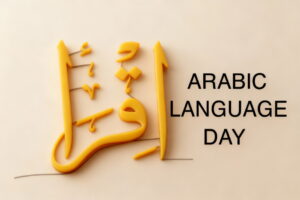
How Much Can Modern Standard Arabic Help You Understand the Quran?
Many Arabic learners face a similar situation: they study Modern Standard Arabic (MSA), feel comfortable reading news articles and holding formal conversations, and then open the Quran, realizing it feels like a completely different language. The words sound familiar, the grammar looks similar, but understanding the meaning isn’t as easy as expected.
So, what’s happening here? Can you understand the Quran with MSA alone? Is Modern Standard Arabic enough, or do you need to study Quranic Arabic separately? How closely are the two connected, and where do they differ? More importantly, what’s the smartest way to approach both if your goal is to improve your Arabic while getting closer to the Quran’s original language?
This article will explain how MSA and Quranic Arabic are related, highlight their differences, and offer practical steps to help you study both with clarity and confidence.
Table of Contents
ToggleHow MSA and Quranic Arabic Are Connected?
It might surprise you to learn that MSA Quran studies show these two forms of Arabic share more in common than most people expect. Many assume that Quranic Arabic is an entirely separate language, but it sits on the same grammatical foundation as Modern Standard Arabic.
Shared Grammar and Structure:
Both forms follow the same grammar system, which means the way verbs, nouns, adjectives, and prepositions work together follows the same set of rules. The word order in most sentences is similar to, typically placing the verb before the subject, then the object.
For example, a sentence like كَتَبَ الولدُ رسالةً – kataba al-waladu risālatan (The boy wrote a letter) works in both MSA and Quranic Arabic without changing its structure. The rules for verb conjugation, case endings, and sentence building remain consistent in both.
Common Vocabulary and Roots:
One of the clearest links between MSA and Quranic Arabic lies in their shared vocabulary. A large number of Arabic words used today in newspapers, books, and speeches originate from the same root system found in the Quran.
Arabic is built on a system of three-letter roots that produce various words by adding prefixes, suffixes, and vowel changes. If you learn a root like ع ل م ʿilm (meaning knowledge), you’ll find it used in both Quranic verses and MSA texts, appearing in words like عِلْم ʿilm (knowledge), عَالِم ʿālim (scholar), and مَعْلُومَات maʿlūmāt (information).
Formal Tone and Eloquence:
Another important connection is the formal, refined tone both forms use. Neither MSA nor Quranic Arabic includes slang, casual phrases, or colloquial shortcuts. Sentences tend to be longer and carefully structured, aiming for clarity, elegance, and meaning.
This makes both suitable for formal speeches, academic writing, religious texts, and official communication, setting them apart from regional dialects spoken in everyday conversations.
Differences That Make Quranic Arabic Unique
While the similarities between MSA and Quranic Arabic provide a strong starting point, some clear differences can make understanding the Quran difficult if you’ve only studied MSA.
1- Archaic and Less Common Words
They were common at the time but have since fallen out of everyday use. These words reflect the linguistic richness and historical depth of Classical Arabic, which differs in many ways from the modern Arabic spoken today.
For example, terms like غاسق (ghāsiq, meaning darkness) or العِهْن (al-ʿihn, meaning carded wool) were familiar to early Arab audiences but are rarely encountered in modern writing or conversation.
Examples of archaic words also include differences in spelling and script that reflect older orthographic norms. A clear case is the word “رءا” (Rā’ā) versus the more modern spelling “رأى” (Ra’ā), both meaning “he saw.”
- In the Quranic script, “رءا” is used to preserve the phonetic clarity and original form of the word, following classical conventions.
- In Modern Standard Arabic, however, the word is commonly written as “رأى”, with a simplified use of the hamzah (ء) and alif (ا).
These variations highlight how Quranic Arabic retains older grammatical, morphological, and orthographic features that are not typically used in contemporary Arabic. Understanding these differences is key for learners who want to appreciate the Quran’s linguistic style and deepen their comprehension of its message.
2- Classical Grammar Nuances
Although the basic grammatical system is the same, the Quran occasionally uses older, classical structures that differ from the patterns taught in MSA courses today. Sentence orders, specific case endings, and rhetorical devices appear in the Quran that aren’t part of standard modern usage. As a result, a verse might look familiar but sound unusual when compared to a modern sentence built from the same vocabulary.
3- Pronunciation and Recitation Rules
Another key difference is how the Quran is recited. MSA reading doesn’t require special pronunciation guidelines beyond clear, correct articulation. But Quranic Arabic is traditionally recited using Tajweed, a set of rules covering elongations, pauses, emphases, and proper articulation of letters.
These rules aren’t optional. They preserve the original sound and rhythm of the Quran as it was revealed, which means students must pay close attention to pronunciation details they might not encounter in MSA classes.
How Much of the Quran Can You Understand with MSA?
Now let’s get to the question many students ask: Can you understand the Quran with MSA alone? The short answer is partially. MSA gives you a strong head start, but there’s more to it.
Recognizing Familiar Passages
If you’ve built a solid foundation in MSA, you’ll recognize many words, phrases, and grammatical structures within the Quran, especially in frequently recited surahs like Al-Fatiha or Al-Ikhlas.
Verses like قُلْ هُوَ اللَّهُ أَحَدٌ Qul Huwa Allahu Ahad (Say: He is Allah, the One) use clear, familiar grammar and vocabulary that MSA students can easily identify.
The Challenge of Full Understanding
While MSA helps with recognizing individual words and basic grammar, understanding the deeper, layered meanings in the Quran is more challenging. The Quran often uses metaphor, symbolism, and rhetorical techniques that require specific study.
Even when you recognize a word, its meaning within a particular verse might differ based on historical, cultural, or religious context.
Practical Ways to Bridge the Gap
The good news is that you don’t have to choose between MSA and Quranic Arabic. You can strengthen your knowledge of both by using a simple, structured approach.
1. Supplement MSA with Quran-Focused Study
Once you’ve gained confidence in MSA grammar and vocabulary, start adding lessons dedicated to Quranic Arabic. These classes focus on older expressions, uncommon vocabulary, classical grammar features, and recitation rules.
2. Use Parallel Translations and Tafsir
One of the most effective study tools is reading the Quran alongside reliable translations and Tafsir (interpretations). This allows you to compare the original text with its explanation, helping you understand not just the words but the meaning behind them.
It’s a practical way to build your comprehension and notice how classical grammar affects interpretation.
3. Listen to Recitations with Commentary
Listening to Quranic recitations while following along with explanations makes a noticeable difference. It helps you learn the correct pronunciation and Tajweed while also connecting sounds to meanings and grammatical structures.
Is MSA Enough by Itself?
While MSA provides a strong foundation for reading and understanding formal Arabic texts, it’s only part of the picture when it comes to the Quran.
Why MSA Is a Valuable Starting Point?
Mastering MSA equips you with the grammar, sentence structure, and vocabulary needed to access much of the Quran’s text. It boosts your reading speed, comprehension, and confidence when approaching classical Arabic texts.
The Limitations of Sticking Only to MSA
That said, certain Quranic expressions, grammar styles, and rhetorical features don’t appear in modern texts. To fully appreciate the depth of the Quran’s meaning, you’ll need to study these classical features separately.
The Best Learning Path
The most effective way to handle this is by starting with MSA, developing a strong command of grammar, sentence patterns, and core vocabulary, then moving into Quranic Arabic study.
At AlBaher Arabic Language Center, this is the exact method followed. Students begin with MSA courses, gradually improving their formal Arabic skills, then shift to Quranic Arabic programs that build on this base.
This method makes the learning process smoother and helps students transition from understanding simple verses to grasping deeper, more complex passages.
Modern Standard Arabic alone won’t explain every detail in the Quran, but it gives you a strong, reliable foundation. If you aim to connect with the Quran in its original form, starting with MSA is the smart move. From there, you can add Quranic study, Tajweed, and classical grammar lessons to fill in the remaining pieces.
If you’re interested in improving both your formal Arabic and Quranic understanding, AlBaher Arabic Language Center offers programs that can help. Explore the available courses and choose the one that fits your goals. There’s no better time to start improving your Arabic than today.



